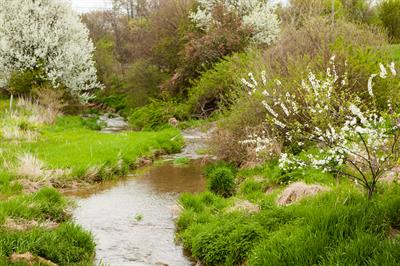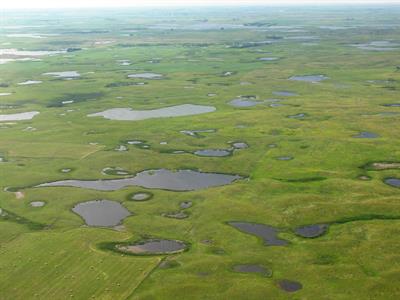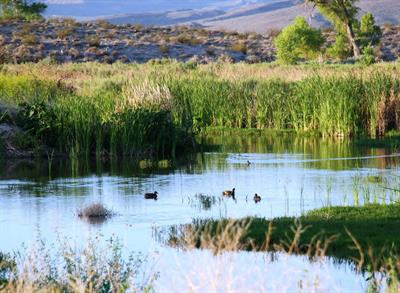Outdoor America 2018 Issue 3
Picture yourself outdoors. Maybe you’re fishing for brook trout or in a duck blind during hunting season. You could be kayaking a scenic river or taking your furry best friend for a splash in a local stream.
What do all of these activities have in common? They depend on clean water. We’re not talking about the highly treated water that comes out of your kitchen faucet. (And even that has problems these days.) We’re talking about water at its source: headwaters, wetlands, and small streams that may not flow year-round but are crucial to healthy fish and wildlife, outdoor recreation, and safe drinking water.
All of that is at risk.
Last year, President Trump issued an executive order directing the U.S. Environmental Protection Agency (EPA) and Army Corps of Engineers to repeal the “Clean Water Rule” issued in 2015 by the previous administration to more clearly define which U.S. waters are protected by the Clean Water Act. In addition, the president directed EPA and the Corps to replace the existing rule with a new one based on an opinion written by late Supreme Court Justice Antonin Scalia in the Rapanos v. United States case.
This new rule is under final administrative review - the last step before it is released for public comment.
The League has opposed a Scalia-based rule from the start. In his minority opinion -which was not the Supreme Court’s actual ruling in the Rapanos case - Justice Scalia sought to dramatically cut Clean Water Act protections for small streams and wetlands by limiting the definition of “waters of the United States.”
What Did Justice Scalia Say?
The goal of the Clean Water Act is to “restore and maintain the chemical, physical, and biological integrity of the Nation’s waters.”
Because the Clean Water Act grants protections to “waters of the United States,” limiting the definition of these waters has huge ramifications on the ability of federal and state agencies to limit pollution of our nation’s water resources.
Rather than looking to the established science on hydrology and the connectivity of waters when drafting his opinion, Justice Scalia instead based his conclusions on the multiple definitions of “waters” and “streams” in a 1954 edition of Webster’s Dictionary. He argued that “the principal definition of ‘stream’ includes reference to such permanent, geographically fixed bodies of water: ‘[a] current or course of water or other fluid, flowing on the earth, as a river, brook, etc.’ The other definitions of ‘stream’ repeatedly emphasize the requirement of continuous flow: ‘[a] steady flow, as of water, air, gas, or the like’….”
Justice Scalia therefore decided that Clean Water Act protections should only apply to streams and wetlands that meet the following criteria:
- Streams that are “continuously flowing bodies of water,” meaning only streams that flow all year, although he suggests that an exception could be made for some streams during a drought.
- Wetlands with a “continuous surface connection” to another water body covered by the Clean Water Act under his narrow definition, such as the Great Lakes or rivers that cross state lines.
Using these criteria, many waters would no longer be protected by the Clean Water Act.
Large-Scale Losses

EPA reports that under the criteria supported by Justice Scalia, millions of streams and wetlands would lose Clean Water Act protections, including:
- 60 percent of streams across America. Because 6 in 10 streams do not flow continuously, many tributaries to rivers and larger streams would lose protection, meaning pollution into these tributaries would not be prohibited under the Clean Water Act. Based on the science of hydrology, that pollution will wind up in continuously flowing rivers and streams
- Sources of drinking water for 1 in 3 Americans. More than 117 million Americans draw our drinking water from public systems that depend in full or in part on streams that do not flow continuously.
- 20 million acres of wetlands. From Florida’s Big Cypress Swamp to the northern Great Plains, millions of acres of wetlands would lose protection from draining or filling - at a time when wetland declines are already accelerating.
If a Scalia-based rule is adopted, the Clean Water Act would not protect these vital waters from pollution or from being drained and filled, which is completely at odds with the fundamental purpose of the Clean Water Act. Common sense and overwhelming science tell us it is impossible to protect water quality in large streams and rivers if the tributaries flowing into them are not protected from pollution.
What the Rule Should Do

The Clean Water Act was signed into law in 1972 to safeguard our country’s most precious natural resource, and it did so successfully for decades. But Supreme Court cases in 2001 and 2006 led to flawed policies that stripped protections for some wetlands and streams. The 2015 Clean Water Rule corrected these mistakes and reestablished protections for wetlands and tributary streams to ensure America’s waters are safe for drinking, fishing, swimming, and other uses.
The Izaak Walton League believes that the 2015 Clean Water Rule is fundamentally sound and we oppose its repeal. If it is replaced, we believe any replacement rule must:
- Be grounded in science. The 2015 Clean Water Rule was supported by more than 1,200 studies demonstrating the effects of upstream pollution on downstream waters.
- Effectively safeguard streams, wetlands, and other waters as required by the Clean Water Act. The purpose of the Clean Water Act is to improve water quality nationwide. It is impossible to achieve that goal without protecting tributary streams from pollution or small wetlands from being drained and filled.
- Ensure America’s outdoor traditions thrive for generations to come. Hunting, fishing, wildlife watching - these activities rely on clean water for fish, wildlife, and other natural resources.
Clean water and abundant wetlands are essential to hunting and fishing. If this critical habitat is degraded, our hunting and angling traditions - and our nation’s $887 billion annual outdoor recreation economy - will suffer.
We need every League member to speak up in support of clean water and healthy wetlands as the administration works to replace the Clean Water Rule.